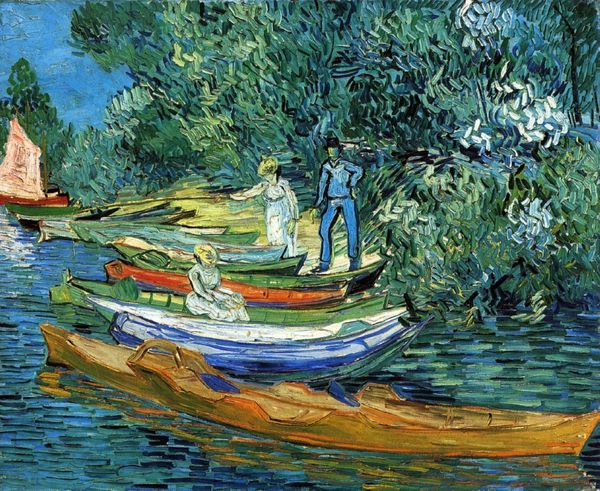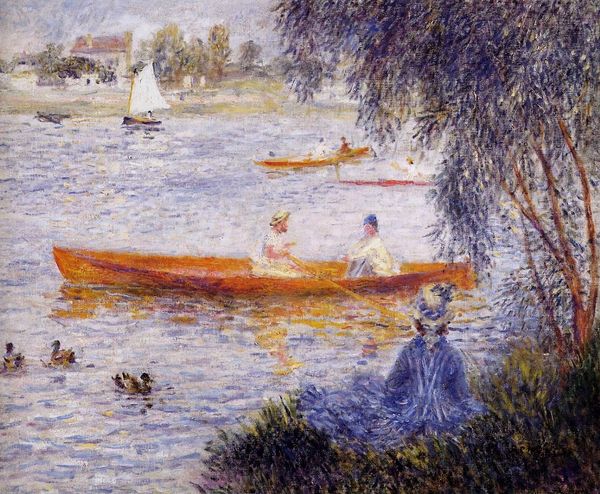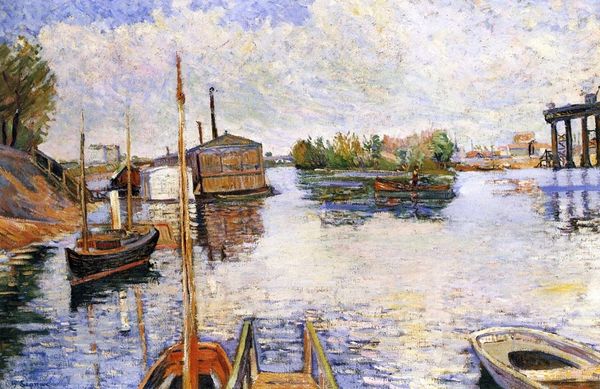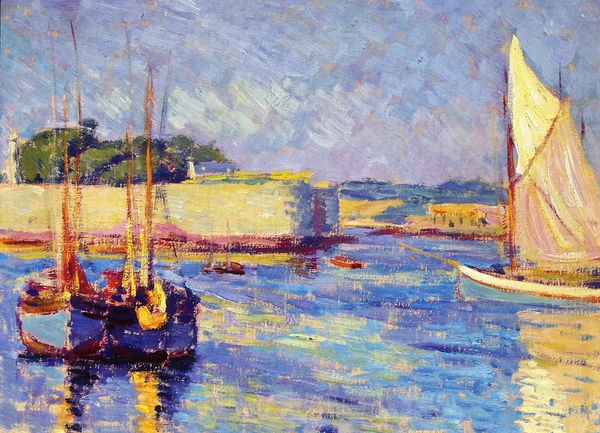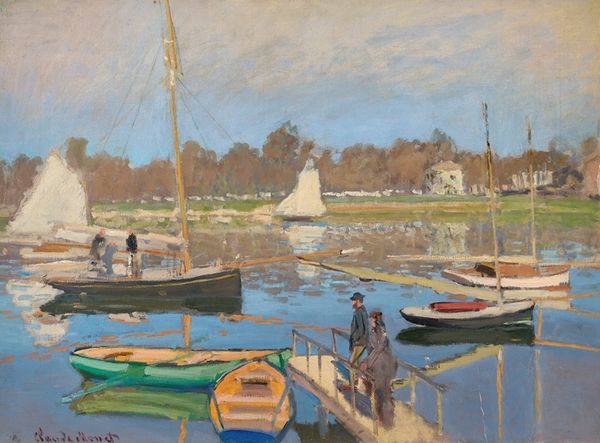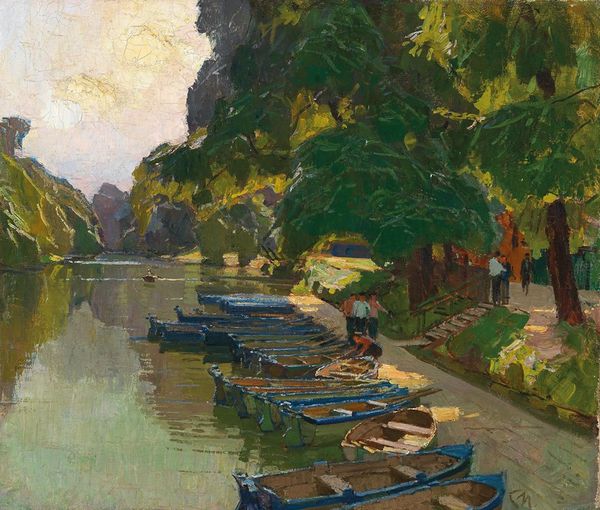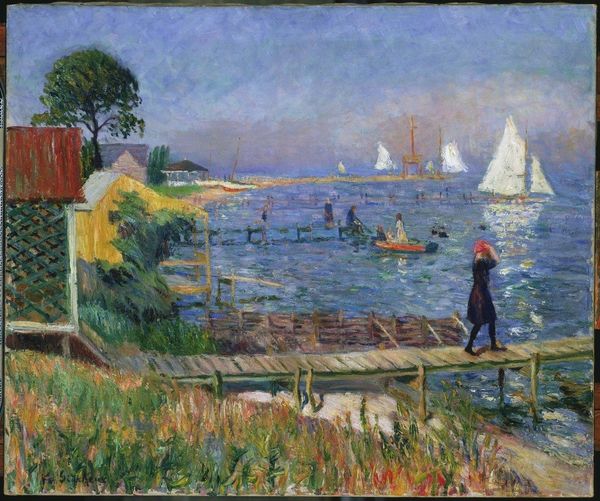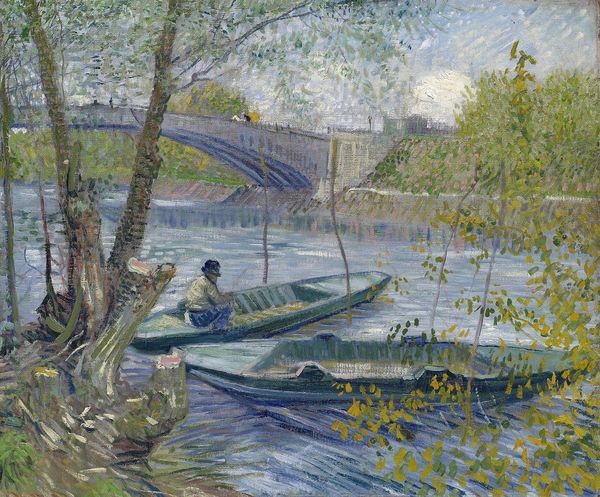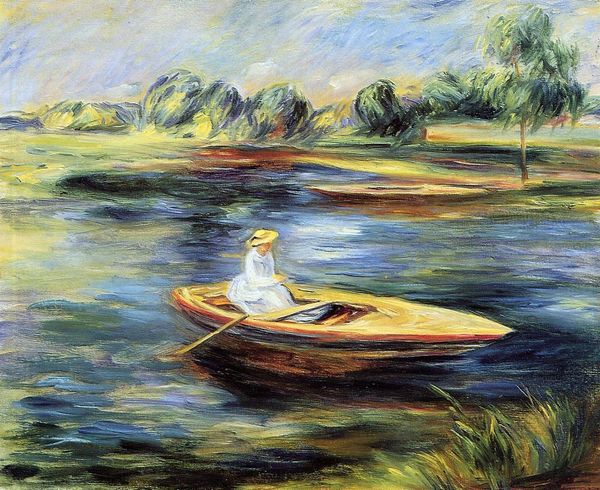
Copyright: Public Domain: Artvee
Editor: So here we have Renoir's *The Seine at Argenteuil*, painted in 1888. It's oil on canvas, and depicts a very serene river scene. I'm really struck by how vibrant the water is. What stands out to you in this painting? Curator: What I see here is not simply a landscape, but a portrait of leisure and burgeoning social change. The figures in the boat, are they working or at play? The context is the rise of the *banlieue*, a space both connected to and separate from Paris. Who has access to this space, and for what purpose? Consider who *doesn't* get to leisurely row down the Seine. Editor: That's interesting. I hadn't thought about it like that, I was just admiring the pretty colours. So you are saying the painting is speaking to the dynamics of class? Curator: Exactly! Impressionism often obscures the harsh realities of 19th-century France by focusing on beauty. But look closer. Who could afford leisure time? Whose labor created that leisure? Are there suggestions about gender roles here, with the women in the boat being observed rather than active participants in industrial society? Editor: Wow, now the idyllic scene seems to carry much more weight. I notice now that there is almost an audience, suggested in the background... How do you think Renoir positions himself in this social commentary? Curator: That is the vital question! Is he celebrating this scene uncritically, or subtly questioning it? Is he simply portraying his reality, or does the perspective tell us more? Exploring his other works could help us determine whether Renoir's inclusion of the women on a leisurely jaunt is a comment or an innocent depiction of everyday life. Editor: I never knew one painting could speak to so many cultural layers. I will definitely look at this painting, and others, with new eyes from now on.
Comments
No comments
Be the first to comment and join the conversation on the ultimate creative platform.
